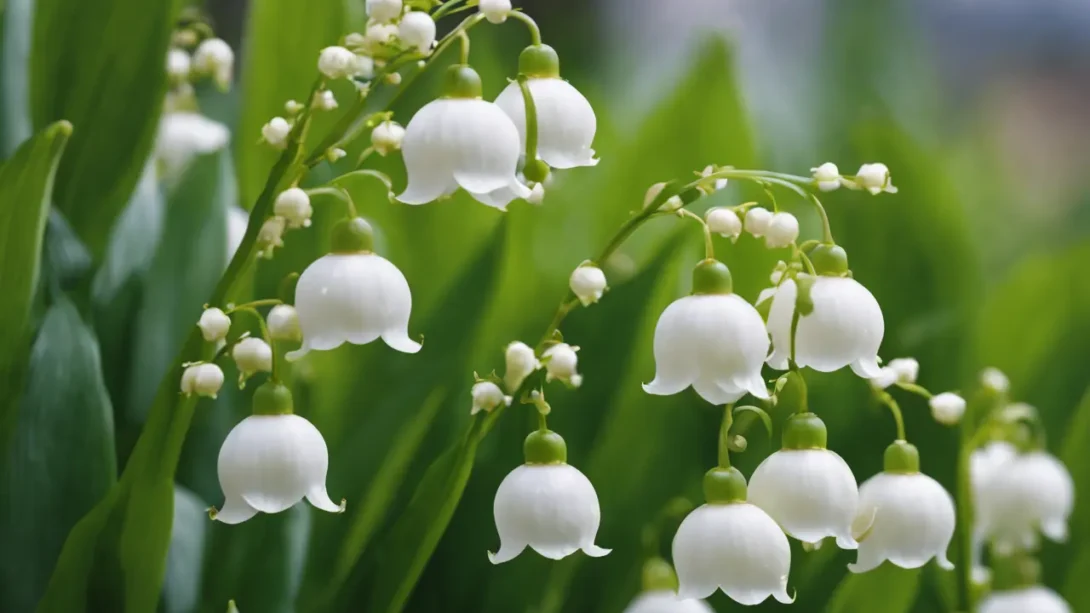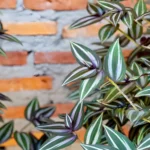Convallaria majalis, commonly known as Lily of the Valley, is a perennial plant well-loved for its delicate, bell-shaped flowers and sweet fragrance. Despite its charming appearance, Lily of the Valley can be quite problematic in gardens where it is considered invasive. Its rapid spread and persistence make it difficult to control, and its toxicity poses risks to pets, children, and wildlife. This guide aims to provide effective strategies for those looking to remove or manage this plant in their gardens.
Identification of Lily of the Valley
Identifying Convallaria majalis is the first step in its removal. This plant features broad, lance-shaped leaves that emerge directly from the soil in the spring, creating a lush green carpet. By late spring, arching stems bear dainty, white, bell-shaped flowers with a distinct, sweet fragrance. In the fall, the flowers are replaced by small, red berries. It’s crucial to distinguish Lily of the Valley from similar plants to ensure proper removal techniques are applied. Key identifiers include its unique leaf arrangement and flower structure.
Reasons for Removal
Lily of the Valley’s invasive nature is the primary reason for its removal in many gardens. It spreads quickly through underground rhizomes, forming dense colonies that can overrun garden spaces and choke out other plants. Moreover, all parts of the plant are toxic if ingested, containing cardiac glycosides that can cause serious health issues. Its presence can be particularly hazardous in gardens frequented by curious pets and children. Additionally, its aggressive growth can impact local biodiversity, outcompeting native flora and altering ecosystems.
Manual Removal Techniques
Manual removal is often the most environmentally friendly way to deal with Lily of the Valley, though it can be labor-intensive. It involves carefully digging up the plants, ensuring that all parts of the rhizomes are removed from the soil to prevent regrowth. This method requires:
- Preparation: Gather gloves, a digging fork, and a bucket or bag for disposal.
- Digging: Start by loosening the soil around the plants with the digging fork. Carefully lift the entire clump, making sure to get as much of the root system as possible.
- Rhizome Removal: Sift through the soil to find and remove any leftover rhizomes, which can be small and easy to miss.
- Disposal: Dispose of the plant material responsibly. Do not compost, as this can lead to accidental spreading.
When manually removing Lily of the Valley, it’s important to be thorough. Missed rhizomes can quickly lead to regrowth, necessitating repeated efforts. Safety gear, like gloves, is also recommended to avoid skin irritation from handling the plant.
Chemical Control Options
For those facing extensive infestations of Convallaria majalis, chemical herbicides may be a necessary option. When manual removal is impractical due to the plant’s widespread nature, herbicides can offer a more efficient solution. However, it’s crucial to use these chemicals responsibly to minimize environmental impact and avoid harm to surrounding vegetation.
- Selecting the Right Herbicide: Glyphosate-based herbicides are commonly recommended for Lily of the Valley due to their systemic action, which kills the plant from the inside. It’s important to choose a formulation that is appropriate for your specific garden setting and to follow the manufacturer’s instructions carefully.
- Application: The best time to apply herbicide is when the plants are actively growing and in full leaf, typically in late spring to early summer. This ensures that the plants are actively transporting nutrients, which helps in the effective absorption of the herbicide. Apply on a calm, dry day to prevent drift to non-target plants.
- Safety Precautions: Wear protective clothing, including gloves and eye protection, when handling and applying herbicides. Be mindful of nearby desirable plants and water sources, as herbicides can cause damage if misapplied.
- Follow-up: One application may not be sufficient to eradicate Lily of the Valley completely. Monitor the area and be prepared to reapply the herbicide if new growth appears.
Natural and Non-toxic Methods
For gardeners who prefer to avoid chemical solutions, there are several natural and non-toxic methods to control Lily of the Valley. These methods can be effective but may require more time and persistence.
- Smothering: This method involves covering the Lily of the Valley with a thick layer of mulch or a landscape fabric to block sunlight, effectively starving the plants. It’s a slow process but can be effective over time.
- Solarization: Solarization uses the sun’s heat to kill Lily of the Valley. During the hottest part of the year, cover the affected area with clear plastic sheeting, securing the edges. The greenhouse effect created underneath will heat the soil to temperatures that can kill the plants and their rhizomes.
- Barriers: Installing deep garden edging or barriers can help prevent the spread of Lily of the Valley into unwanted areas. This method won’t eliminate existing plants but can be an effective preventative measure.
Maintenance and Monitoring
After employing removal strategies, regular maintenance and monitoring are essential to ensure that Lily of the Valley does not make a comeback. Here are some tips for ongoing management:
- Regular Inspections: Periodically check your garden for signs of Lily of the Valley regrowth, especially in the spring. Early detection makes removal much more manageable.
- Garden Health: Maintain a healthy garden by regularly adding organic matter to the soil, mulching, and watering appropriately. A healthy garden can better resist the incursion of invasive plants.
- Immediate Action: If you notice new Lily of the Valley shoots, remove them immediately, making sure to get as much of the root system as possible. Prompt action can prevent the plant from re-establishing itself.
Alternative Planting Options
Choosing non-invasive alternatives to Convallaria majalis can fulfill your aesthetic and gardening needs without the associated risks. Here are some recommended plants that offer beauty without becoming a nuisance:
- Native Shade Plants: Look for native species that thrive in similar conditions as Lily of the Valley. Examples include wild ginger (Asarum canadense), which has attractive heart-shaped leaves, and Solomon’s seal (Polygonatum biflorum), known for its graceful arches of green leaves and white flowers.
- Ground Covers: For those seeking ground-cover options, consider pachysandra (Pachysandra terminalis), which offers dense foliage, or sweet woodruff (Galium odoratum), which produces starry white flowers and a sweet scent similar to Lily of the Valley.
- Ferns: Ferns can provide lush greenery in shady areas without the invasive tendencies. Maidenhair fern (Adiantum) and lady fern (Athyrium filix-femina) are two options that can add texture and interest to your garden.
- Herbaceous Perennials: Plants like hostas and bleeding hearts (Dicentra spectabilis) are excellent for adding foliage and flowers to shaded garden areas without the worry of uncontrolled spread.
Conclusion
Removing and controlling Lily of the Valley in your garden requires a combination of methods, patience, and vigilance. Whether you choose manual removal, chemical treatments, or natural methods, it’s important to stay committed to the process to ensure success. Regular maintenance and monitoring of your garden will help prevent Convallaria majalis from re-establishing and allow your chosen plants to thrive.
For those seeking alternatives, there are many non-invasive plants that can beautify your garden without the drawbacks associated with Lily of the Valley. By selecting native species and appropriate ground covers, you can create a diverse, resilient, and environmentally friendly garden landscape.
Remember, the key to controlling invasive plants like Lily of the Valley lies in understanding their growth habits, being proactive in removal efforts, and choosing sustainable gardening practices. With dedication and the right approach, you can maintain a healthy and vibrant garden free from the challenges posed by invasive species.




